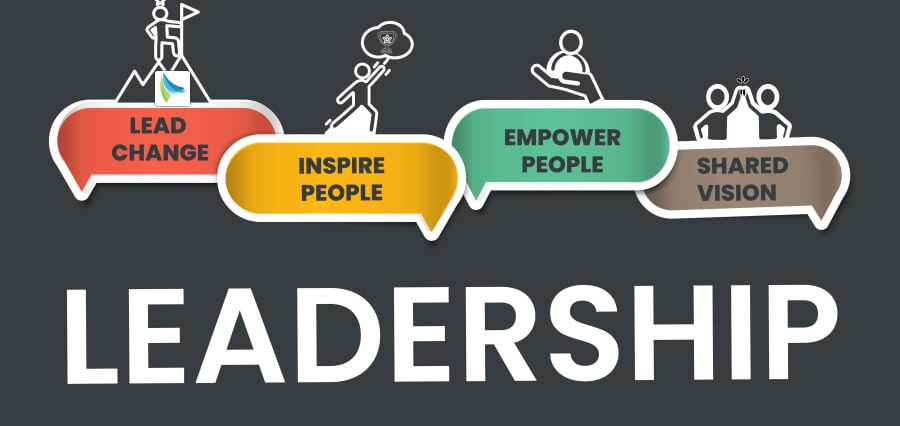Command and control leadership is in the past. Today’s globalized, networked, and purpose-driven world now demands a different kind of Authentic Leadership founded on belonging and authenticity. The best leaders are those who lead authentically and generate a sense of belonging. This new leadership model emphasizes empathy over ego, transparency over structure, and a sense of belonging over compliance. These values aren’t just rewriting the leadership rulebook—it’s rewriting the rulebook on how organizations operate and thrive.
Inclusive and authentic leadership is not a trend. It’s a mandate that fuels innovation, forms culture, and boosts performance. Engaged leaders who create such cultures can potentially unlock the full potential of their employees and thrive in the nuance of a fast-evolving global world.
Defining Inclusive and Authentic Leadership
In essence, inclusive Authentic Leadership is about building a culture in which all have a voice, are noticed and respected, no matter background, identity, or worldview. It is beyond representation; it is intentional to place multiple voices at the table and establish psychological safety.
True leadership, in contrast, depends on self-awareness, integrity, and authenticity. True leaders don’t hesitate to state what they stand for, lead genuinely, and are willing to be vulnerable. They refuse to conform to traditional professionalism norms that suppress individuality. Rather, they share their entire being with others—and invite others to do the same.
Authenticity and inclusion together create a change-resistant leadership model that is immensely powerful and people-centered.
Why Authenticity and Inclusion Matter Now
The socio-economic climate of today now—one of global ambiguity, revolution through technology, and increasing demands for social justice—demands a different type of leadership. Workers, particularly future generations of workers, are looking to work in workplace cultures reflective of their own. They want to work for organizations that pay lip service to diversity but infuse inclusion into the culture.
Inclusiveness and authenticity propel trust. When employees are free to be themselves, creativity is increased, teamwork is more rich, and engagement is more profound. They are business outcomes, not ‘moral wins.’ Again and again, evidence confirms that inclusive and diverse organizations perform better than their comparable others on business performance, customer satisfaction, and innovation.
Additionally, employees during times of crises turn to actual, empathetic, and grounded leaders. Empathetic leaders create stability in the midst of change and construct respect and resilience cultures for everyone.
Constructing Empowered Leadership
Empowered leaders do not materialize overnight—empowered leaders are constructed. Constructing inclusive and real leadership begins with a commitment to growth as an individual and a motivation to challenge conventional models. Constructing empowered Authentic Leadership includes:
- Self-awareness: Achieving an understanding of one’s values, strengths, and blind spots is a good start. Leaders need to know where their own biases are and how they may, in turn, influence their own decisions and interactions.
- Listening and empathy: Multicultural leaders listen in trying to understand rather than respond. They soak up input from numerous diverse voices and create room for views other than their own.
- Courage and vulnerability: Courage requires the acceptance of deficiency. Vulnerable leaders are those that show their vulnerability and are open to feedback, an indicator of humility and trust.
- Accountability: Inclusion is not a comfort station. It takes goal setting, measurement, and holding self and others to account for inclusive action.
Organizations play an instrumental role in making it possible. Leadership development programs, mentoring, coaching, and systemic policy modification are all mechanisms that enhance inclusive leadership development.
Inclusion woven into Culture
Inspirational leadership has to go beyond the individuals—it has to be based in organizational culture. That’s going to require turning on its side how people get brought on board, how performance is managed, and how communication happens. Leaders need to be champions of inclusive policies, inclusive benefits, and diverse leadership pipelines.
Above all, the conversation around inclusion needs to transcend race and gender and encompass disability, neurodiversity, age, sexual orientation, and socioeconomic status. It is not sameness but oneness in diversity.
Self-reflection is also a continuous requirement from leadership. Organisations need to check from time to time whether their culture is progressing together with their stated values—and whether leadership action is building or undermining trust.
The Ripple Effect of Empowerment
When leaders lead authentically and inclusively, they are able to bring out the best in others. Employees feel more secure in their role, teams function better in combination, and innovation benefits from a richer source of experience and ideas.
This domino effect goes far beyond that. Empowering leaders transform communities, transform industries, and make the world a more just, a more humane place. They redefine success—not just through promotion or profit—but through purpose, impact, and legacy.
Conclusion: Leading with Humanity
The future of leadership lies in our power to lead with humanity. In a world becoming ever more complex and interdependent, it will be the empowered, authentic, and inclusive leader who will triumph—no longer by screaming loudest, but by listening most deeply; not by commanding from above, but by elevating from below.
Businesses that invest in cultivating this kind of Authentic Leadership aren’t only prepared for tomorrow—They’re creating an organization where any one person, regardless of identity or background, can lead, contribute, and flourish.
Empowered to lead is empowered to change the world—one act of inclusive, authentic leadership at a time.
Read More: Women at the Helm: The Rise of Gender-Equitable Leadership











